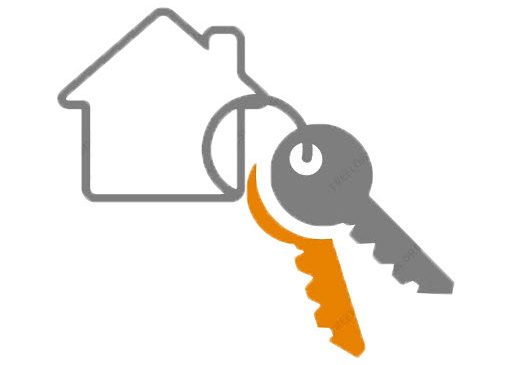
Increasing the amount of attic insulation in a home is one the fastest ways to increase a homeowner’s comfort and energy efficiency of a home. This is important for older homes that have less insulation than homes built today; however, adding insulation to a newer home may also pay for itself within a few years. Another advantage of increasing insulation levels in a home is an available 30 percent Federal Tax Credit.
A guide for inspecting an attic for proper amount of insulation level includes:
Measure Insulation Level – measure thickness of the insulation. If less than 11 inches of fiber glass or rock wool or 8 inches of cellulose, typically means less than R-30, more insulation is needed.
Visual Insulation Check – an alternative method for determining insulation level is a visual inspection. If the top of joists are visible, then there is not enough insulation. If the top of the joists are not visible, move some of the insulation to determine its height above the joists. Bare coverage of joists tops is still not enough.
Check for Water Leaks – visually inspect ceilings and top of insulation in attic for stains or marks. These stains or marks may indicate roof leaks, water piping leaks, heating and air conditioning (HVAC) leaks (when HVAC is installed in attic space), or poor ventilation. Make repairs before insulating, because wet insulation is ineffective.
Energy Auditor – an energy audit by a professional energy auditor is another option for completing an insulation inspection. The professional will provide recommendations for adding insulation and how much.
Sealing Air Leaks – air leakage occurs when outside air enters a house through cracks and openings in the ceiling. Sealing these cracks and openings in the ceiling before installing additional insulation significantly increases the energy efficiency of the new insulation.
An important point is to verify that the insulation is evenly distributed across the attic with no low spots. A second point is that insulation tends to settle over time, especially in older homes. Problems in both these areas lead to less energy efficiency and higher utility bills.
Do it yourself by increasing the amount of insulation in the attic to between R-38 and R-60. A guide for loose-fill or blown insulation:
This is insulation is blown into the attic using a special machine that is available for rent from many equipment rental stores and some home improvement centers.
Electrical devices and recessed lights require three inches of clearance from insulation.
Pipes for kitchen stoves, wood stoves, and furnaces should only be insulated with fiberglass or rock wool, because cellulose may smolder if flue temperatures become hot enough.
Insulation fibers can be drawn into air distribution systems if the ducts are not properly sealed, allowing the fibers to circulate within the living areas. Be sure to seal all of the home’s ductwork and other openings to avoid insulation leaking into living areas.
Insulation: Installing Blanket, Batt, or Roll Insulation
For those who want to do it yourself, this type of insulation is easier to install. A guide for blanket, batt, or roll insulation:
Use unfaced batts when re-insulating over existing insulation. Faced batts do not allow for optimum energy conservation.
Continuous rolls are easier to cut by hand using an insulation knife for trimming to fit.
Install the second layer of insulation over and perpendicular to the ceiling joists to reduce heat loss or gain through the joists.
Work from the perimeter toward the attic opening.
Never lay insulation over recessed light fixtures or soffit vents.
Keep all insulation at least 3 inches away from recessed lighting.
Installation Tips: More Tips for Do It Yourselfers
Additional tips include:
The attic must be filled evenly to a total level of approximately 14 to 15 inches above the top of the ceiling to achieve approximately an R-38 value.
Wear a quality respirator, protective eyewear, and clothing such as goggles, gloves, long-sleeved shirts, and pants to minimize contact with the insulation.
Do not forget to insulate the attic trap or access door.
Additional attic insulation installation improves energy efficiency, because heat moves from a warm area to a cold area. Contrary to the popular belief that heat rises. In winter a heated room tries to heat all colder areas around it such as the attic, walls, and floors. During summer heat from the outside the home tries to heat a colder room inside the home through the ceiling and walls.
The cold weather of winter months often brings about reminders of the need for winterization. Homes become cold, with drafts coming in through windows and doors and from under the house. Pipes become frozen and heating bills more than double. Many small things can be done to prepare a home for winter.
Preparing the Inside of a Home for Winter
Check all windows for proper sealing and drafts. Windows with severe drafts or leaks may needed additional calking to keep out drafts. Towels may also be placed in window sills to prevent drafts but require daily checking to prevent mold from moisture on the towels.
Check weather stripping on all sides, top and bottom of doors. If weather stripping is missing, damaged or cracked, it should be replaced to prevent cold air from coming in. Weather stripping is available at any home improvement store. Additionally, a blanket may be hung over the door or at the base where drafts come in.
Heater vents should be dusted and vacuumed. Wall heaters should also be dusted and cleared of any debris. Ensuring heater vents are clean and flow freely will help to ensure even heat distribution.
Homes with fireplaces should have their fireplace and chimney cleaned. Debris often collects in the chimney throughout the year. A dirty chimney greatly increases the risk of chimney fire and could cause a house fire as well.
Check roof for any loose or missing shingles. Missing or loose shingles greatly increase the risk of a roof leak. Missing shingles should be replaced and loose shingles can be nailed in place if necessary, or can be replaced. Severe wind can blow loose shingles off, also increasing the risk of a roof leak.
Gutters should be cleaned to remove any dirt and debris leftover that has settled. Missing, broken or loose gutters should be replaced. Clogged gutters increase the risk of water leaking through the walls near the ceiling.
Pipes should be covered with insulated foam or wrapped with a towel to prevent broken pipes. Outdoor garden hoses should be removed to prevent water from freezing in the hose, which can result in broken pipes as well.
Check insulation under the house. Missing or damaged insulation can cause additional drafts and heat loss through the floor. If replacing the insulation is not an option, placing additional rugs on the floor inside the home can help prevent heat loss through the floor.
Homeowner Benefits to Preparing a Home for Winter
Winterizing a home has many benefits to homeowners. The initial investment cost, while minimal, will greatly reduce the risk of major expenses later on. Heat bills rise in the winter months as it takes more to heat a home when it is cold outside. Winterizing a home will help to minimize the additional heating bill. In severe cold weather, pipes can freeze and break causing serious problems and costly repairs. Homeowners can lower their risk of extra costly repairs by winterizing their home.
